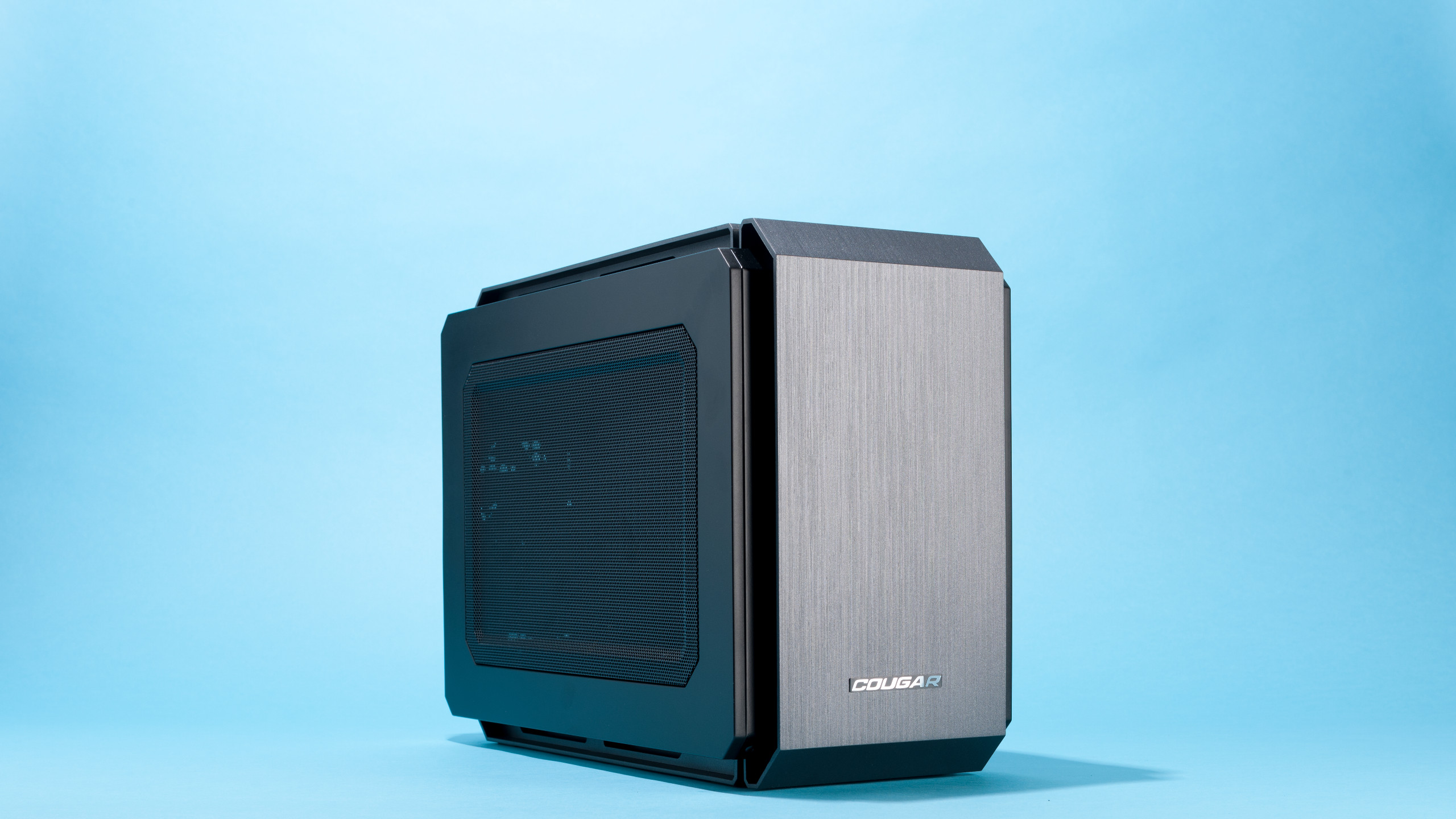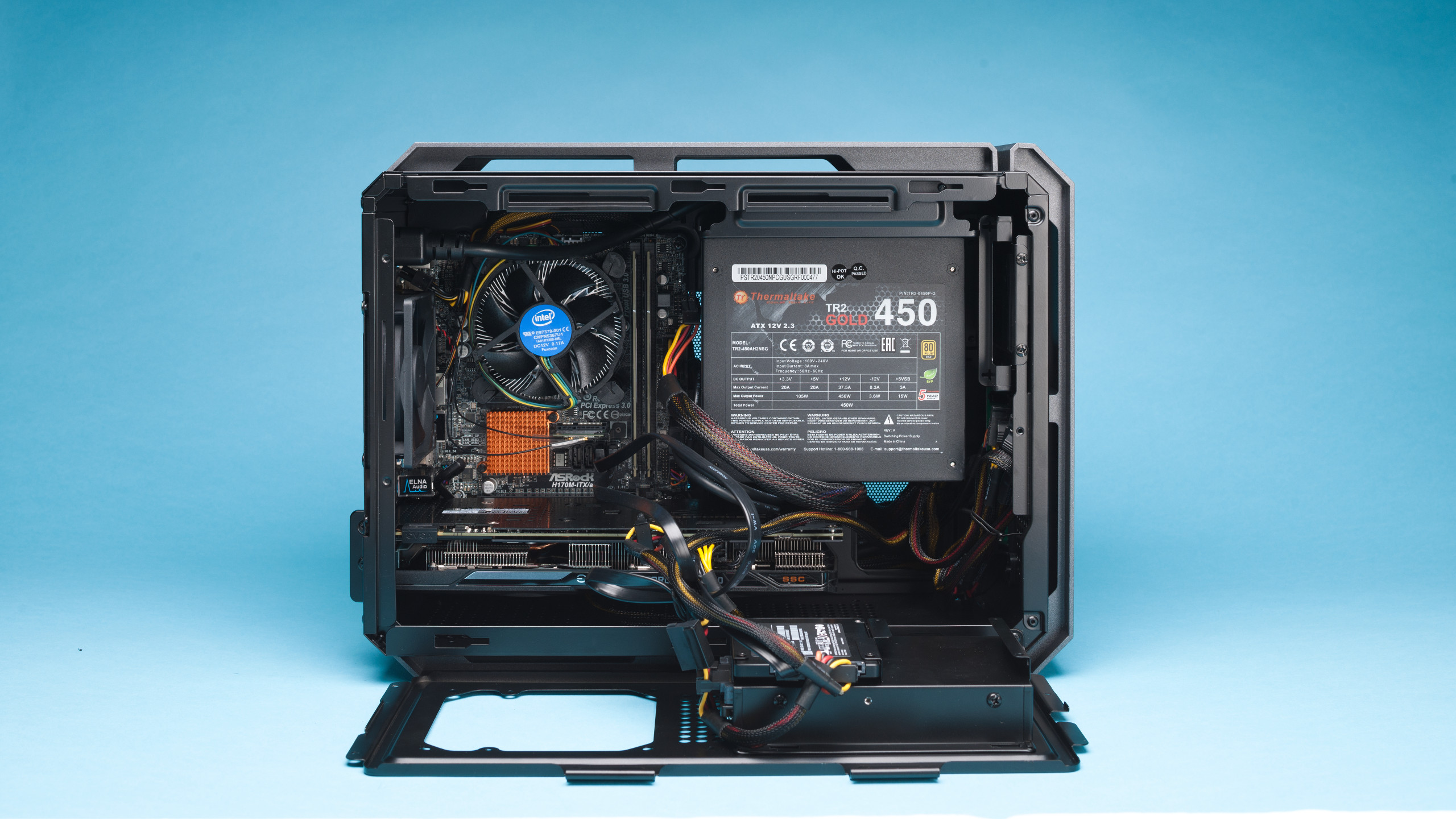
Presented by Newegg
This is what an $800 PC can look like. We call this build the Budget Gamer, but that name will probably conjure up confusion. For some, $800 is a starting line. For others, it’s a luxury.
The reasoning for this probably warrants a little backstory. For those readers who aren’t familiar with Maximum PC, our web Blueprints builds are the result of a collaboration with Newegg. Just like the print Blueprints in Maximum PC magazine (also known as “The Builds”), we create three rigs, one for each price tier: $800, $1,500, and $3,000. The Budget Gamer is the lowest of the three tiers, with a budget aimed at the $800 mark with a hard limit of $850.
With that budget constraint in mind, we set out to build a gaming rig that tries to stretch that budget to deliver a competent 1080p gaming rig. This time, we somehow landed right at $800 for our price tag. Not bad. (We normally end up with odd numbers like $793 or $816 or something.)
Here’s what we put together:
CPU: Intel Core i5-6400 - $190
GPU: EVGA GeForce GTX 960 4GB SSC ACX 2.0 - $220
The biggest gaming news, reviews and hardware deals
Keep up to date with the most important stories and the best deals, as picked by the PC Gamer team.
Mobo: ASRock H170M-ITX/ac - $100
Memory: 8GB G.Skill Aegis DDR4-2133 - $34
SSD: 250GB Samsung 850 Evo 2.5-inch SATA - $88
HDD: 1TB Seagate Barracuda 7200PM 3.5-inch SATA - $48
PSU: Thermaltake PS-TR2 450W - $60
Case: Cougar QBX - $60
Total: $800
Prices listed for products represent in-cart price (includes instant rebates and excludes tax and mail-in rebates) at time of procurement. Prices are subject to change.
The build
As with any mini-ITX build, putting this rig together required some patience. Cable management can be a challenge even in the priciest small mini-ITX cases, but the Cougar QBX presented us with just enough room to hide some of our sheathed copper mess.
The QBX doesn’t offer much room for aftermarket coolers, but since we went with the Core i5-6400, we weren’t worried about it anyway. The 6400 is a locked CPU, meaning it can’t be overclocked (by normal means) and it will throttle itself to keep cool. And frankly, the stock cooler that comes with locked CPUs provides plenty of thermal relief.

One of the good things about the QBX is that it offers plenty of room for full-size GPUs. We’ve found ourselves constrained to smaller form factors with the Budget Gamer before, which usually resulted in us defaulting back to the EVGA 1962-KR short 4GB GTX 960. We stayed with EVGA this time around, but the case allowed us the freedom to go with another vendor if we chose to. (It just turned out that the 960 SSC ACX 2.0 was a good deal this time.)
When it comes to storage, we did something a little different this time as well. We’ve eschewed spinning hard drives in the past in favor of grabbing bigger SSDs whenever we could. We decided to go a little more conventional this time, nabbing a 1TB Barracuda in addition to the 850 Evo. Spinning hard drives can be a tough sell for smaller form factors due to bulk and heat, but the Barracuda fit nicely into the case. The QBX’s drive bracket keeps the storage on the “wall” of the frame, opposite of the motherboard tray. We liked how the drives didn’t cover the CPU, however, allowing a direct path for air to feed the CPU fan.
If there’s one last thing to note about building into the QBX is that you have to have the proper power supply. There’s a bracket tab in the case that restricts power supply length to 140mm (about 5.5 inches). Additionally, the ATX power supply must be PS2 and have the plug oriented in a certain direction. That limits the PSUs you can choose from, but if you choose with these limitations in mind, everything should be hunky-dory.

Performance
As with other Budget Gamer builds, the GTX 960 offers good 1080p performance for around $200. However, the card just doesn’t have enough horsepower to keep up in 1440p gaming or higher. That said, our standard suite of tests all test games at 1440p or higher, so don’t despair if you see low numbers here.
In terms of performance in Batman at 1440p, the Budget Gamer didn’t deliver framerates we’d want to play on, but the scores were right in line with what we’d expect from a GTX 960. The extra ‘S’ in EVGA’s SSC designation refers to a slightly higher overclock, which offered up just one extra frame per second at 4K. At 1440p, the card offered up an extra two frames.
In Fire Strike Ultra, we see scores are just a tad higher than the other budget builds that sport the trusty 1962-KR from EVGA.
As we move into GPU benchmarks, we didn’t have high expectations for the i5-6400. In fact, the 6400 is the lowest-tier i5 Skylake CPU you can get in a box. That’s not a bad thing when it comes to gaming, as the 6400 is still a quad-core like its slightly more expensive sibling, the 6500. Both are more than enough processing power for most gaming needs, and the CPU didn’t seem to hold the system back at all.
That said, this CPU is not what you’d want for workstation purposes. With only four cores, no hyperthreading, and the lowest clocks of the retail Skylake family, the i5-6400 got beat out by pretty much every other build. Fore reference, the previous Budget Gamers had i5-6500s, while the Midrange rigs have sported i7 Skylake or Devil’s Canyon parts. The Turbo rigs have hexa-core (and higher) Haswell-E CPUs.
For the single-threaded timed tests, the 6400’s slower clock speed put it behind the other quad-core CPUs, losing out only to the “Breathing Life” build that made use of a CPU that’s three generations behind the 6400.
When it comes to x264, cores count more than clocks, and the 6400’s four cores can’t keep up with the hyperthreading available in K-model i7s. Even in its own class, the 6400’s slower clock let it lag behind the builds based on the 6500.
There’s no reason to despair or think this is all bad. This build is geared for the gamer who wants 1080p power on the go, and for that purpose, it excels. The small form of the Cougar QBX is attractive and has enough airflow to keep components from overheating. We just wouldn’t use it to edit our next film or process images in Photoshop.
A note on affiliates: some of our stories, like this one, include affiliate links to online stores. These online stores share a small amount of revenue with us if you buy something through one of these links, which help support our work evaluating components and games.
PC Gamer is the global authority on PC games—starting in 1993 with the magazine, and then in 2010 with this website you're currently reading. We have writers across the US, Canada, UK and Australia, who you can read about here.






